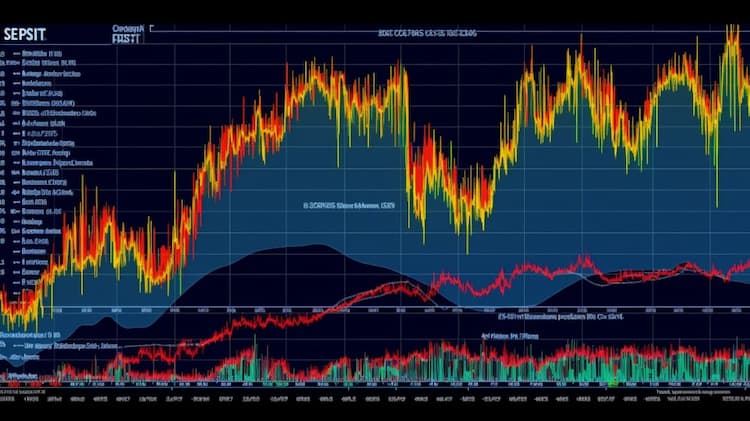
What index does EFA track?
When it comes to investing in international equity markets, EFA, or iShares MSCI EAFE ETF, is a popular choice for many investors. But what exactly is the index that EFA tracks? EFA aims to replicate the performance of the MSCI EAFE Index. In this article, we will explore the details of the MSCI EAFE Index and its significance in the world of international investing. By understanding the index that EFA tracks, investors can gain insights into the geographical and sector allocations of the ETF and make more informed decisions about incorporating it into their investment portfolios.
EFA: An to a Popular ETF
Exchange-Traded Funds (ETFs) have gained significant popularity in the world of finance, offering investors a convenient way to gain exposure to various asset classes. One such ETF is the (EFA), which focuses on international equities. EFA is designed to track the performance of a specific index, providing investors with diversified exposure to non-U.S. developed markets. If you're considering investing in EFA or want to learn more about its underlying index, this FAQ will answer some of your burning questions.
The Index Tracked by EFA: Understanding MSCI EAFE
The index that EFA tracks is the MSCI EAFE (Europe, Australasia, and Far East) Index. MSCI, a leading provider of equity, fixed income, and hedge fund indices, created the EAFE index to represent the performance of developed markets outside of the United States and Canada. The index includes stocks from major markets in Europe, Australia, and the Far East, encompassing companies across different sectors and industries.
 EFA overlap What index does EFA track?
EFA overlap What index does EFA track?
EFA's Composition: Which Countries and Sectors are Included?
The EFA ETF aims to replicate the performance of the MSCI EAFE Index by investing in a diversified portfolio of stocks from multiple countries. Some of the prominent countries included in the index are Japan, the United Kingdom, France, Germany, and Switzerland. These countries represent a significant portion of the developed international markets.
In terms of sectors, the MSCI EAFE Index covers various industries, including financials, healthcare, consumer discretionary, information technology, and more. The index's broad composition helps provide investors with exposure to different sectors within the developed markets outside of the U.S.
The Benefits and Considerations of Investing in EFA
Investing in EFA offers several advantages for investors seeking international diversification. By tracking the MSCI EAFE Index, EFA provides exposure to a broad range of developed markets outside of the U.S., allowing investors to participate in the potential growth opportunities offered by these markets. Additionally, EFA offers liquidity, transparency, and the ability to trade throughout the day on the stock exchange.
However, it's essential to consider certain factors before investing in EFA. Like any investment, EFA is subject to market risks, including volatility and fluctuations in foreign currency exchange rates. Investors should carefully evaluate their investment goals, risk tolerance, and conduct thorough research before making any investment decisions.
In conclusion, EFA, or iShares MSCI EAFE ETF, provides investors with exposure to the MSCI EAFE Index, which represents a diversified portfolio of stocks from developed markets outside of the United States and Canada. The index encompasses countries such as Japan, the United Kingdom, France, Germany, and Switzerland, among others, offering investors exposure to the economic performance of these regions. Additionally, the MSCI EAFE Index covers various sectors, providing investors with broad sector diversification.
Investing in EFA can offer benefits such as international diversification, potential growth opportunities, liquidity, and transparency. However, it is crucial for investors to carefully consider the risks associated with international investing, including market volatility and foreign currency fluctuations. Conducting thorough research, assessing risk tolerance, and consulting with a qualified financial advisor are important steps to make informed investment decisions.
Disclaimer: This article is intended for informational purposes only and does not provide investment advisory services. The information presented here is based on publicly available sources, and the author does not guarantee its accuracy or completeness. Always conduct your own research and consult with a qualified financial advisor before making any investment decisions.
Source 1: EFA issuer website
Source 2: Reuters article about EFA
EFA quote and analysis
Discover the top holdings, correlations, and overlaps of ETFs using our visualization tool.
Our app allows you to build and track your portfolio.
To learn more about the EFA iShares MSCI EAFE ETF, access our dedicated page now.
FAQ
What is EFA stock?
EFA is the ticker symbol for the iShares MSCI EAFE ETF. It represents an exchange-traded fund that aims to track the performance of companies in developed markets outside of the United States and Canada.
What stocks are in the EFA?
EFA holds a diversified portfolio of stocks from various developed markets, excluding the United States and Canada. The specific stocks held in EFA can change over time as the fund's holdings are periodically adjusted to align with the index it tracks. Examples of companies that have been included in EFA in the past include Nestle, Samsung, Toyota, and Novartis.
Which Canadian stocks are in EFA and EEM?
EFA focuses on developed markets outside of the United States and Canada, so it does not typically include Canadian stocks. On the other hand, EEM, which is the iShares MSCI Emerging Markets ETF, primarily focuses on emerging markets and also does not typically include Canadian stocks.
What index does EFA track?
EFA tracks the performance of the MSCI EAFE Index. This index is designed to represent the performance of large and mid-cap stocks from developed markets in Europe, Australasia, and the Far East.
Are there any alternatives to EFA for investing in international developed markets?
Yes, there are alternative options for investing in international developed markets. Investors can explore other ETFs or mutual funds that specifically focus on international developed markets. Additionally, investors can consider investing in individual stocks of companies based in developed markets outside of the United States and Canada.



